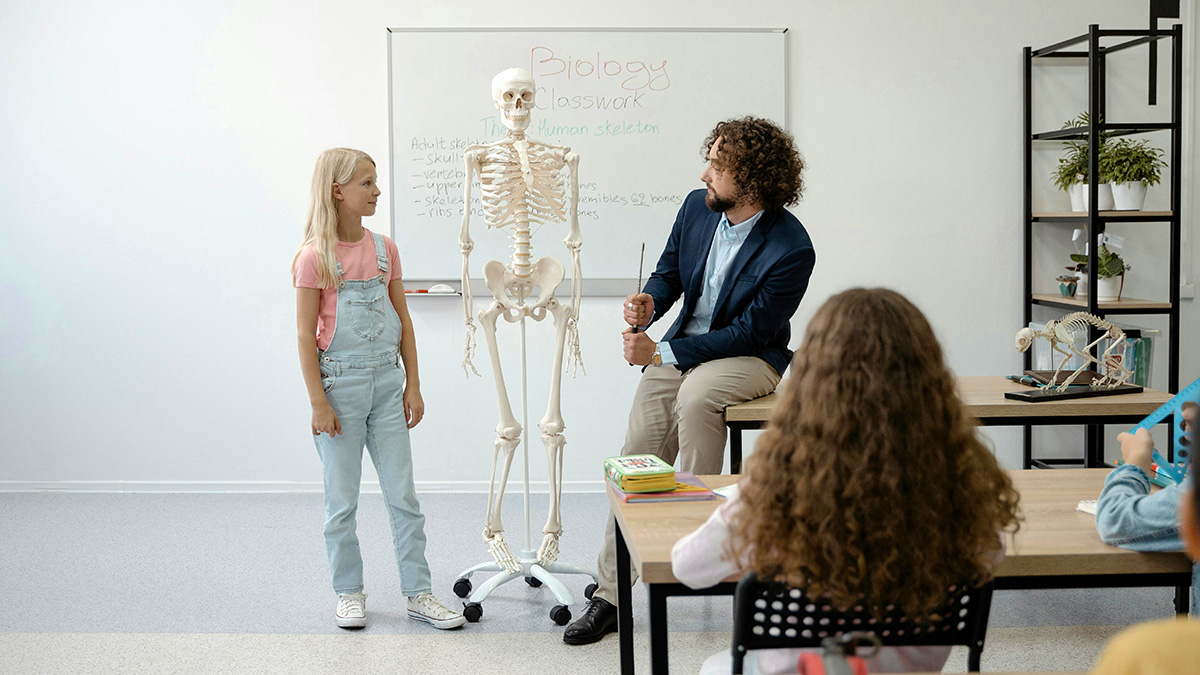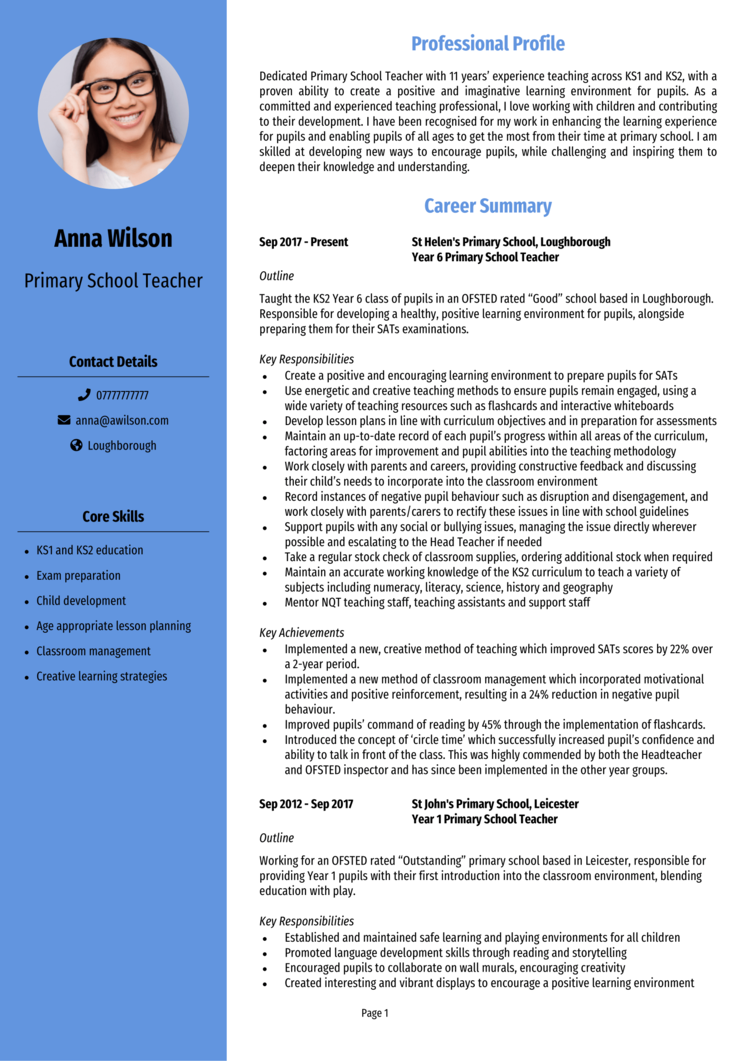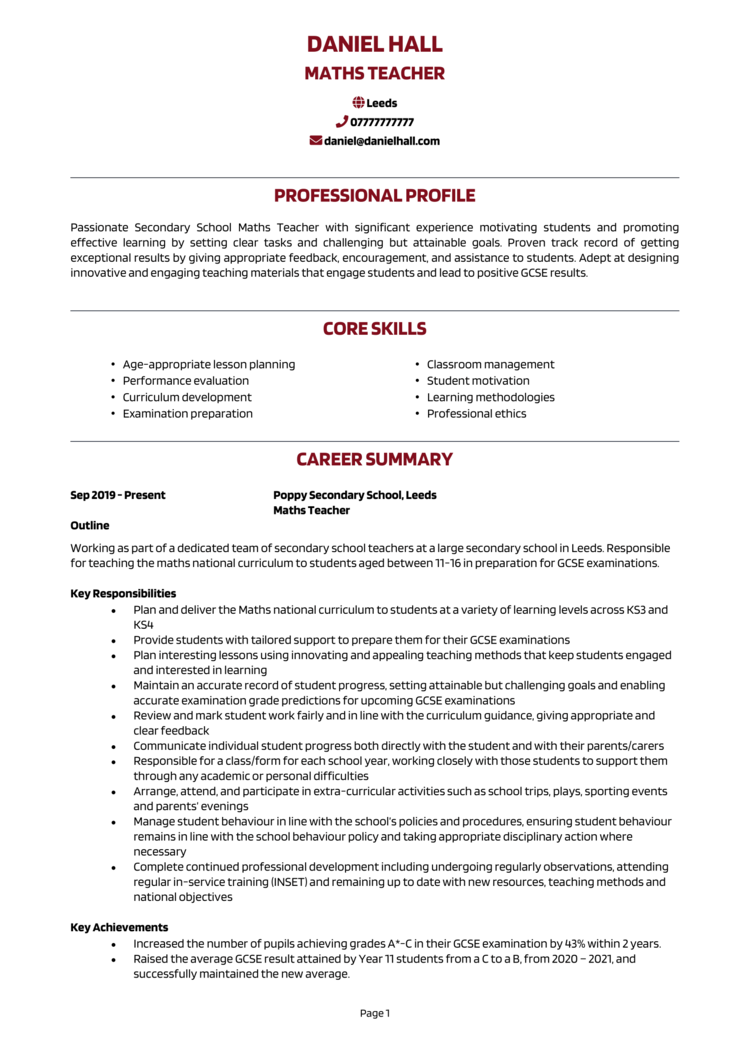Crafting a CV for Teaching Jobs: How to Show Your Passion for Education

Preparing a CV for a teaching role? A well-structured CV can help you communicate your qualifications, experience, and enthusiasm for education.
What employers in the industry expect
Employers in education want to see a CV that provides a clear, well-structured overview of your experience and commitment to teaching. Including soft skills (such as effective communication and classroom management) can demonstrate your ability to engage with students.
Presenting your information in a neat, organised CV format with clearly labelled sections and bullet points helps hiring managers quickly find the details they need.
What to include in your CV and key language to use
A personal statement
Begin your CV with a personal statement – a short introduction that explains who you are, your key skills, and why you are passionate about teaching. This section should be clear and to the point, giving employers a sense of your personality and commitment to the job. If you specialise in teaching one subject, make sure you mention it here.
Examples:
- “Enthusiastic art teacher with a talent for creating a positive, engaging classroom.”
- “Organised teacher with a background in classroom management and lesson planning.”
- “Patient and supportive maths teacher dedicated to helping students achieve their best.”
Keep it simple, but make sure that what you write reflects your strengths and explains what you can bring to a teaching position.
Your teaching experience
List your teaching experience in a clear, organised way, using bullet points for each teaching role and including how long you were there for. Start with your most recent position and work backwards.
For each job, include a few key responsibilities that show your relevant skills, like communication or problem-solving in the classroom.
Examples:
- “Created lesson plans that engaged students and supported different learning styles.”
- “Managed classroom activities to keep students focused and motivated.”
- “Provided one-on-one support to students needing extra help.”
Information about your education and certifications
In this section, include details about your education, relevant courses you have completed, and any certifications that support your teaching experience. Be sure to list the places you studied, dates, and the qualifications or degrees you earned.
If you have completed any specialised training (such as in child psychology, classroom management, or ESL), it’s helpful to note this here.
Examples:
- “Bachelor’s Degree in Education, ABC University, 2019.”
- “Certification in ESL instruction (English as a Second Language), completed 2021.”
- “Specialised training in child psychology and classroom management for diverse learning needs.”
Examples of good CVs for teaching
Credit: standout-cv.com
Why it works:
- A clear layout with bullet points makes important information easy to find.
- The simple format and organised sections help employers scan quickly.
Credit: standout-cv.com
Why it works:
- A simple, organised layout with bullet points makes skills easy to scan.
- The clear job title (“Maths Teacher”) at the top instantly tells employers the candidate’s subject.
CV mistakes to avoid
Avoid using exaggerated job titles
Avoid using exaggerated job titles that could be perceived as unprofessional. Use clear, accurate titles—like ‘Teaching Assistant’ or ‘Classroom Support Specialist’—that reflect your actual experience so that employers can understand your teaching background at a glance.”
Avoid using an unprofessional email address
A simple, professional email address shows you take the application seriously. Avoid informal or playful email addresses that seem unprofessional.
Boost your confidence for your job search
If you want to improve your English skills to feel more confident in your job search, explore our English Online courses and see how the British Council can help support your career goals.






